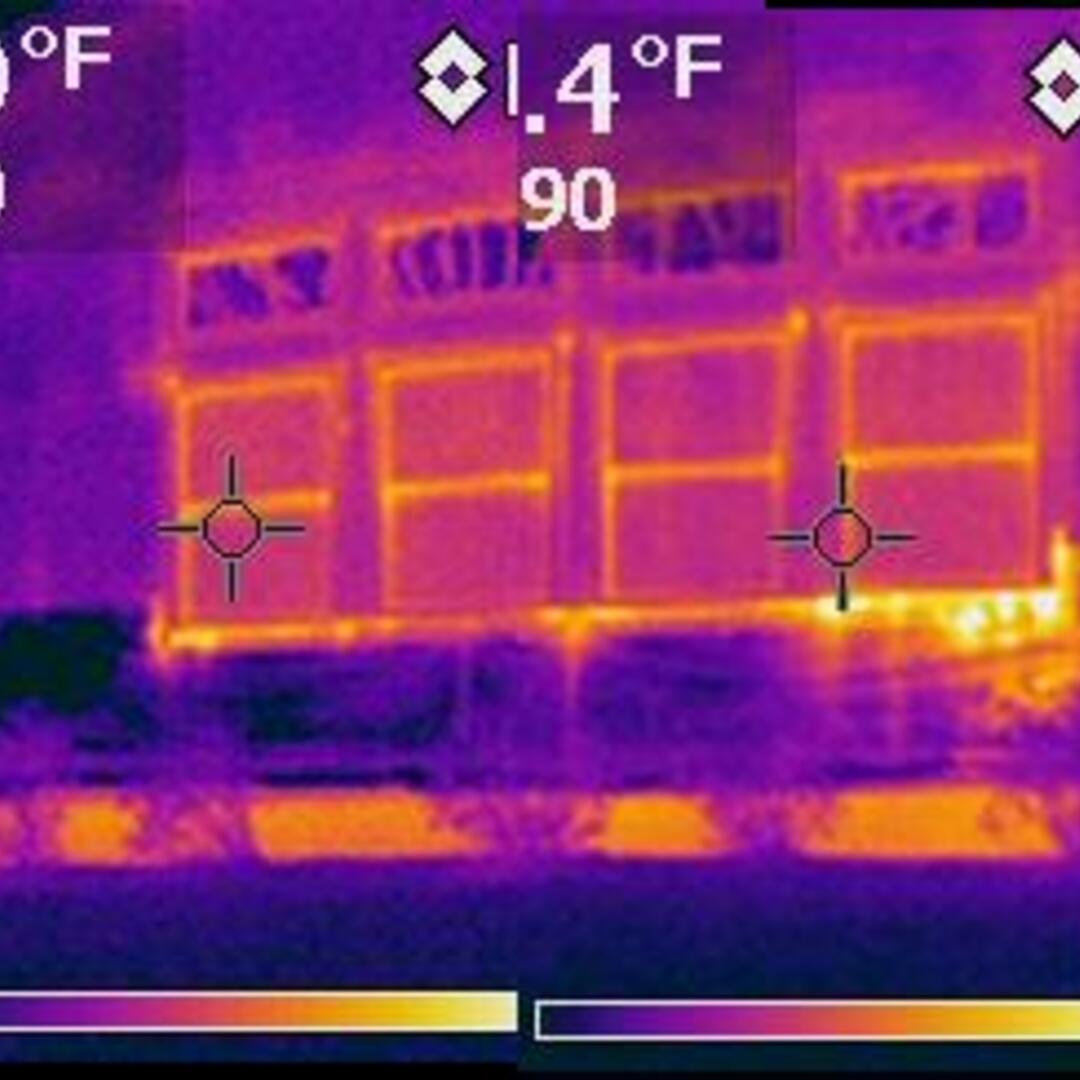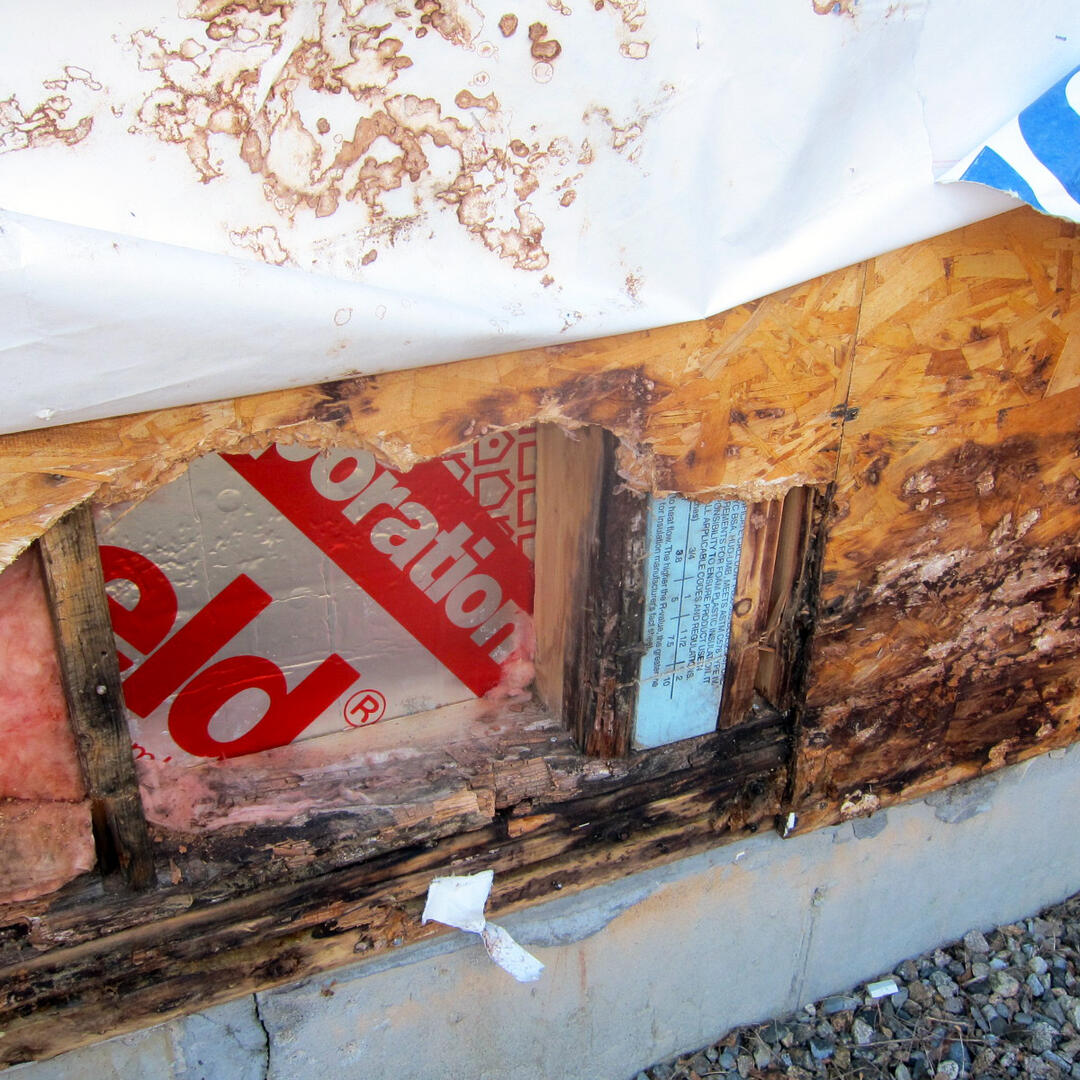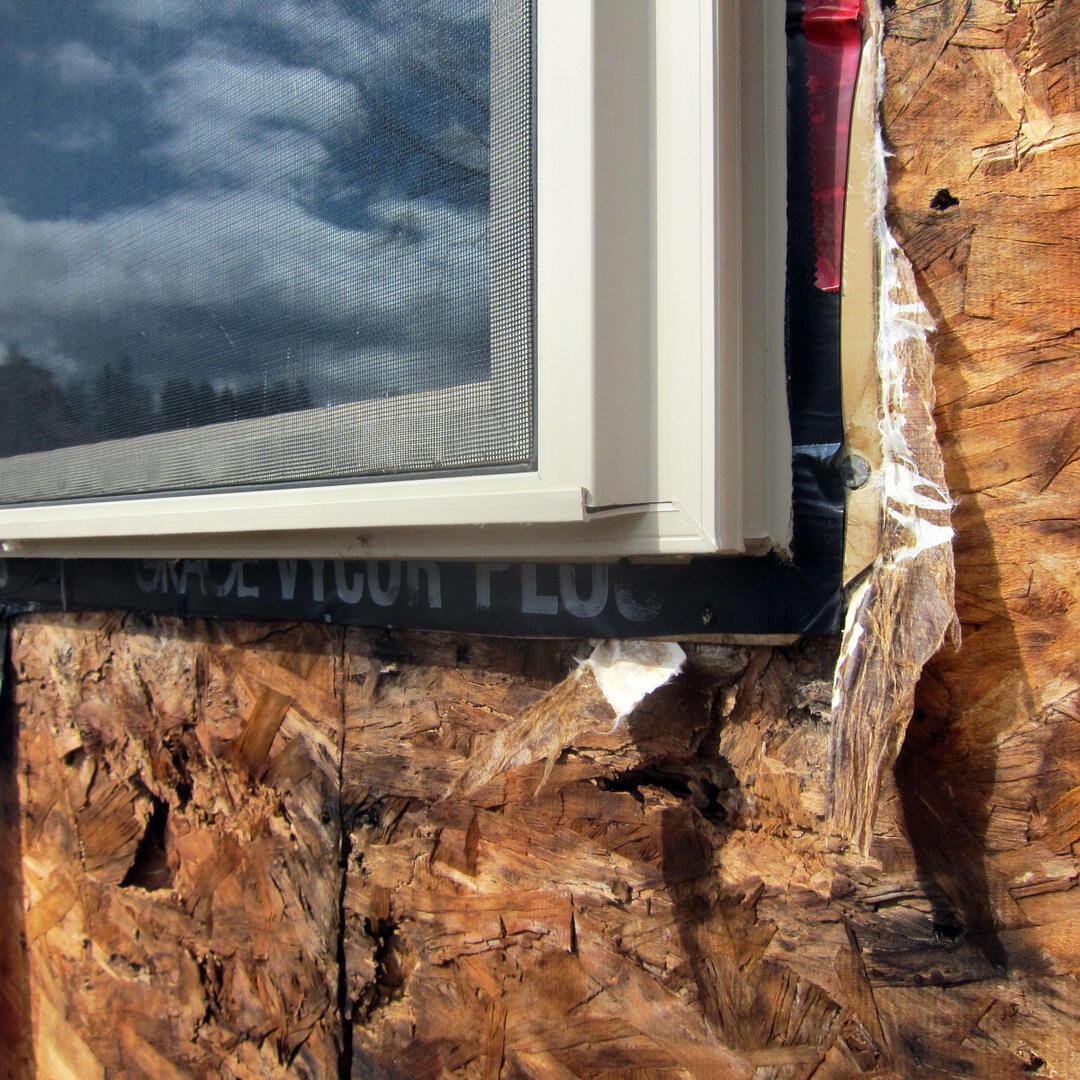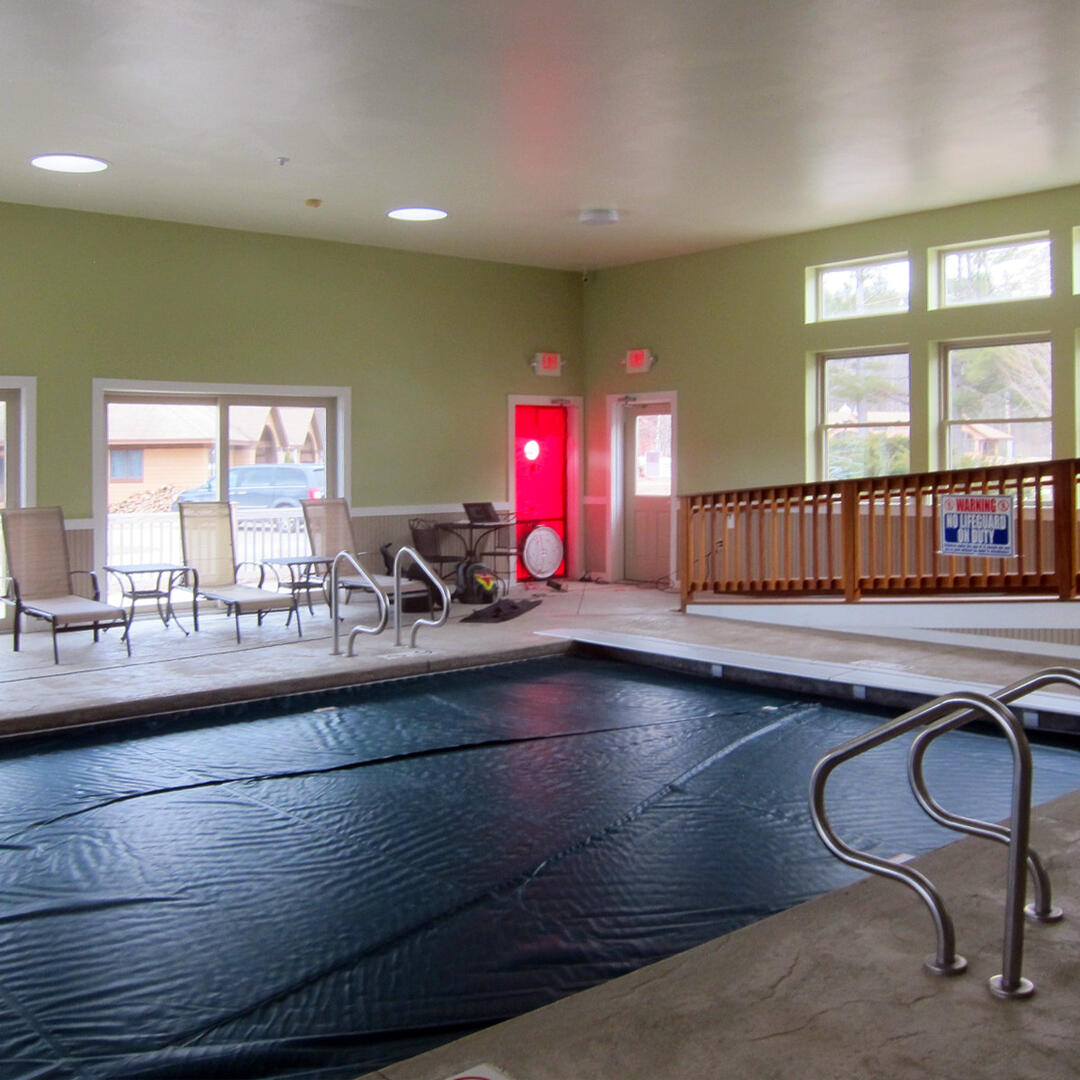BSC investigated a 5 year old wood-frame indoor pool building in Climate Zone 6A. This work was prompted by reports of staining of the exterior siding; disassembly of the walls revealed substantial rot of the sheathing and the wood framing. BSC was asked to determine the cause of the damage, and provide recommendations for build-back in a moisture-safe manner. Exterior infrared inspection revealed warmer areas surrounding the window, especially at the sill/corner area. The wall was disassembled, revealing substantial decay of the OSB wall sheathing and framing (outboard side). Damage concentrations were seen at window sills, wall corners, and wall sill plates. The building was examined for airtightness and pressurization/depressurization: a pool should ideally be as airtight as possible and negatively pressurized, to keep warm, humid interior air out of building enclosure cavities. This testing revealed that the pool building was substantially tighter than standard construction. However, the pool building was operating at a positive 23 Pa pressure, due to a misconfigured pool HVAC system. This large positive pressure pushed moisture-laden pool air out through leaks in the building enclosure/shell, causing the observed moisture damage. Warm areas in exterior infrared images indicate localized air leakage. A layer of taped foil-faced polyisocyanurate insulation was originally installed between the stud frame wall and the interior gypsum board: this layer improved airtightness and reduced moisture vapor flow. However, air barrier imperfections (floor slab-to-wall, window perimeter, electrical outlets) resulted in the extensive air leakage damage. BSC provided remediation recommendations, working from the damaged exterior side. The first recommendation was to operate the pool at a negative pressure, and confirm this condition with direct measurement. Enclosure recommendations included installation of closed-cell spray foam in stud bay cavities (to improve airtightness), installation of plywood sheathing with a water resistive barrier, with cladding on a ventilated rainscreen, to allow drying of any pool-sourced moisture reaching the sheathing.

Main navigation
- Our Services
- Articles & Papers
- Guidance
- Popular Topics
- Building Science Live
- Bookstore
- Events & Training






